Florida became a part of the United States in 1819. The Adams-Onis Treaty, also called the Transcontinental Treaty, the Florida Treaty, and the Florida Purchase Treaty, defined the border between New Spain and the United States. The treaty took effect July 17, 1821. Spain gave the land to the United States if the United States assumed five million dollars of claims of American citizens against Spain. Older children can read the text of the treaty at: Adams-Onis Treaty.
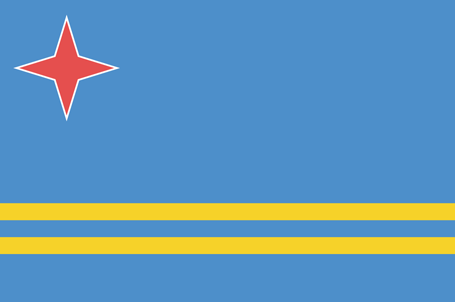
Flag of Aruba
Aruba celebrates Flag Day, a national holiday. Claimed by Spain in 1499, Aruba became a Dutch colony in 1636. Still a Dutch possession, Aruba is a bit larger than Washington, DC. Oranjestad is the capital. Because it is located in the Caribbean Sea, the island has a tropical climate. However, it lies outside the hurricane belt and is seldom threatened. Slightly over 100,000 people live on the island, and many of them depend on the 1.5 million tourists who visit the vacation destination. Children can learn more at: Aruba.
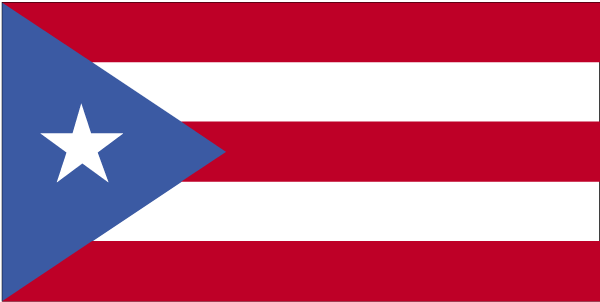
Flag of Puerto Rico
Puerto Rico celebrates Emancipation Day. Slavery was ended on this date in 1873. Puerto Rico at that time belonged to Spain, and the Spanish National Assembly voted to abolish slavery.

Truman and Diplomats Signing NATO Treaty
North American Treaty was signed in 1949. Twelve nations formed the original North American Treaty Organization: Belgium, Canada, Denmark, France, Great Britain, Iceland, Italy, Luxembourg, the Netherlands, Norway, Portugal, and the United States. Greece and Turkey became members in 1951, and West Germany joined in 1954. Spain joined in 1982. Czechia, Hungary, and Poland became members in 1999. Bulgaria, Estonia, Latvia, Lithuania, Romania, Slovakia, and Slovenia joined in 2004. Albania and Croatia were admitted in 2009. Montenegro became a member in 2017, and North Macedonia joined in 2020. On this day in 2023 Finland became a member. Today NATO has 31 members. The main purpose of NATO is protection; an attack against one member is an attack against all members. Idea: Children could locate these countries on a world map and decide whether all countries benefit equally from this treaty. Children can learn more at: NATO.
Spanish-American War began in 1898. At that time Spain ruled Cuba, and many Americans had heard that the conditions on the island were intolerable. The United States sent the battleship Maine to protect Americans living there. In February the ship exploded, and 260 people on board died. “Remember the Maine” became a popular expression. War was declared, and battles occurred not only in and around Cuba but around the Philippines as well. Teddy Roosevelt became famous as one of the leaders of the Rough Riders. The war ended on August 12, 1898. Children could learn more at: Spanish-American War.
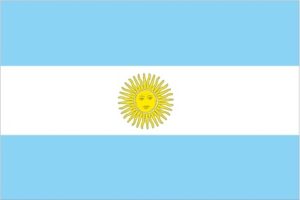
Flag of Argentina
Argentina celebrates Revolution Day. It became free of Spanish rule in 1810. Spaniards explored the area around 1515. Argentina is about 30 percent the size of the United States. Known for its vast Pampas, the country is famous for its large cattle herds. About 42.6 million people live in Argentina, and Buenos Aires is the capital. Children could learn more about Argentina at: Argentina.
Florida was ceded to the United States by Spain in 1821. The Adams-Onis Treaty (also called the Transcontinental Treaty) had been signed in 1819, but the treaty took effect on this day in 1821. The United States agreed to give Spain $5 million and to renounce any claims on Texas in exchange for West Florida and East Florida. Children could learn more about Florida’s history at: Florida.
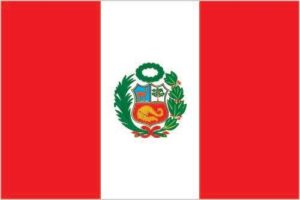
Flag of Peru
Peru celebrates Independence Day. It gained its freedom from Spain in 1821. Lima is the capital of this South American country. Its area is a bit smaller than the area of Alaska, and natural resources include silver, gold, copper, and petroleum. Almost 30 million people live and work there. Idea: The Incas once controlled portions of what is now Peru. Children could find out more about the Incas and the Spanish conquistadors. Children could learn more at: Peru.
Hurricane sank ten Spanish treasure galleons off the coast of Florida in 1715. The ships, laden with silver, were returning to Spain. About 700 sailors died, but a few survived by finding lifeboats. Experts state that every once in a while silver coins from the fleet still find their way to shore.
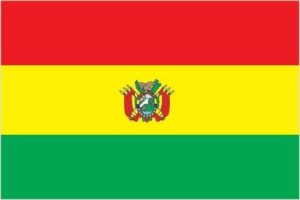
Flag of Bolivia
Bolivia celebrates Independence Day. A landlocked country in South America, Bolivia gained its freedom from Spain in 1825. La Paz is the capital, and at one time the region was under Inca control. Although the country is presently bigger than the state of Texas, it was once much larger. Parts of the country were sold, and parts were given away as spoils of war. Its natural resources include silver, tin, oil, and natural gas. About 11.7 million people live in the country. Children can learn more at: Bolivia.